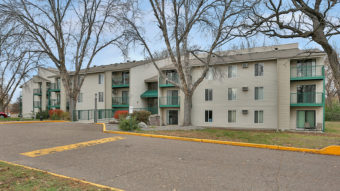Opportunity Zones have become a major talking point in the commercial real estate industry ever since Congress passed the 2017 Tax Cuts and Jobs Act. Created to encourage long-term investment and growth in low-income, distressed American communities, Opportunity Zones offer tax breaks on capital gains to investors and developers who make improvements to an asset.
And with over $6 trillion in unrealized capital gains in the United States, the potential market for reinvestment is staggering. High demand for Opportunity Zone investment has impelled sophisticated funds to take advantage of this trend early on, but as more look toward Opportunity Zone investment, the competition to source the next high-return investment will only increase.
In such a competitive investment climate, utilizing on-market data is no longer sufficient for prospecting. Leveraging off-market data, the entire universe of commercial assets and not just examining properties listed as “for sale,” will become vitally important to identify Opportunity Zone acquisitions—especially for commercial real estate professionals in Illinois.
Identifying Illinois’ major markets
Of the 327 designated Opportunity Zones across Illinois, 133 are located within Cook County, which encompasses over 100,000 commercial assets ripe for reinvestment. The Chicago metro area is the third largest in the United States, making Cook County full of investment potential, especially within its Qualified Opportunity Zones.
According to Reonomy data, multifamily properties represent over one-third of possible investment options in Cook County, with many located in struggling neighborhoods such as West Garfield Park, Englewood and Grand Crossing.
In the past two years, Chicago has become home to a fairly busy apartment market. According to RealPage, builders completed the construction of 10,545 units last year. And this year alone, Chicago faced a big year of building, expecting to clear an estimated 12,000 by the end of 2018—a testament to Chicago’s potential for commercial real estate development within Opportunity Zones.
The Chicago metro area recently experienced a population decrease, which at a glance, does not seem to bode well for multifamily investment. Despite this negative population growth, the 36,000 multifamily Opportunity Zone properties present an opportunity for developers to create more affordable housing options for those in Cook County.
It’s undeniable that the potential for Opportunity Zone investing in the Chicago metro area is massive, but it would be remiss to not mention smaller, but equally viable Illinois markets ready for reinvestment. Champaign County may only have six Opportunity Zone tracts, but in the past year, it saw a significant amount of transactional movement. Multifamily assets account for approximately 37 percent of all Champaign County Opportunity Zone properties and 346 multifamily sales transacted in 2018, totaling over $556 million.
Similarly, Sangamon County only has five Opportunity Zone tracts, but nonetheless has investment potential, with over 5,700 commercial assets located within Qualified Opportunity Zones. Investors and developers searching specifically for vacant land can find an abundance of supply in Sangamon County, where there are over 4,300 land parcels available for reinvestment. Deal volume within this asset was healthy as well. Within the past year, 1768 sales were conducted, averaging around $316,000, making this particular asset class worthy of consideration for possible investment.
Ultimately, for those considering investing in Illinois opportunity zones, off-market data offers a 360 view of the market, going beyond the limited scope of listed, “for sale” properties. This increases the chance of finding a better investment and conducting a stronger deal. Data shows ample multifamily opportunities in Illinois’ Opportunity Zones. With over 269,000 commercial assets located in these designated areas, real estate professionals have a plethora of investment options to explore.
Off-market data as a necessity
Until recently, commercial real estate data was historically guarded by big players in primary markets. Consequently, smaller firms in non-primary markets were required to budget a significant portion of time and resources toward the painstaking collection and analysis of publicly available data. People used to spend hours and days reviewing zoning regulations, transaction history and owner contact information, rendering the deal-making process slow and inefficient. But in the age of digital disruption, performing due diligence and research is no longer so laborious and pricey. The advent of off-market data aggregation tools has ushered in a new era of deal-making, saving stakeholders time and money.
The emergence of these data tools is very promising for the commercial real estate industry—especially for those in the business of finding Opportunity Zone investments, where demand is high and supply is becoming increasingly scarce. While scouring on-market listings can be an adequate place to begin searching for deals, this offers a limited view at best of a given market. So why obstruct your view and limit your possible investment options? The solution to this age-old supply and demand problem lies in leveraging off-market data sources.
Put simply, off-market properties are those that are not publicly listed for sale; a synonym could be “unlisted properties.” Since a limited number of properties are listed for sale at any given time, the breadth of off-market properties is dramatically larger.
Data aggregation platforms such as Reonomy offer unparalleled access to market information, not only providing the whole picture of any market but also allowing for more insightful decision-making. Filtered search options allow users to find target acquisitions within Opportunity Zones and even obtain property owner contact details to reach owners directly instead of having to rely on third parties during the negotiation process.
When commercial real estate technology is deployed properly, the investment process is immediately optimized from due diligence through closing. As investors in Illinois seek to move capital into Opportunity Zone investments, leveraging the correct tech tools will only become increasingly important to meet demand and stay ahead of the curve.



